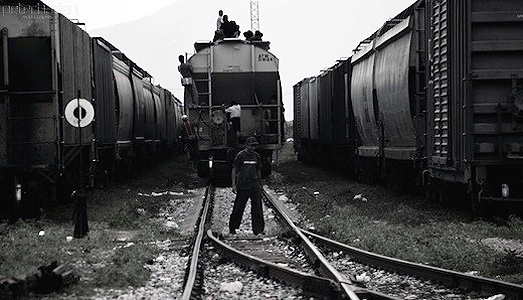
The death count is up to six in yesterday’s train derailment in Southern Mexico, with dozens injured and possibly more bodies buried under overturned freight cars.
The accident was caused by the undermining of the track bed by heavy rain, or perhaps by somebody stealing the rails, but the ultimate responsibility lies with U.S. and Mexican government policies of trade, economic development, imperial political interference and immigration.
At 3:00 AM, eight cars of a twelve-car freight train tipped off the tracks and landed on their sides in a lush tropical region of Mexico’s southeastern state of Tabasco, just south of the border with Veracruz. The train was one of several Mexican and Central American immigrants call “la Bestia” — “the beast.” It goes from Southern Mexico northward to Mexico’s Northern border with the United States.
This particular train’s official cargo was scrap metal, but it also carried a typical human cargo of immigrants traveling the whole length of Mexico from south to north in hopes of being able to cross over into the United States. As is so often the case, the several hundred immigrants aboard were not mostly Mexicans but rather Central Americans, principally Hondurans and Guatemalans.
These undocumented immigrants typically ride on top of the trains, or between the freight cars. Sometimes they strap themselves on, for fear that if they doze off, they could fall under the wheels and be killed or maimed for life. This may have contributed to the deaths, as people could not untie themselves in time to jump clear of the overturning cars.
Survivors say that just before the accident, they had been attacked by criminal elements, who regularly board “la Bestia” to rob the migrants. Sometimes people are killed for their money or kidnapped and held for ransom. There is organized Mexican support for the migrants via mostly church sponsored shelters, and sympathetic villagers sometimes toss food up to the travelers.
The death toll among such migrants in Mexico is extremely high, with thousands killed or “disappeared”. When they get to the border between the United States and Mexico, even more die crossing the scorching hot desert, or drowning in the Rio Grande, which the Mexicans call the “Rio Bravo”.
Yet hundreds of thousands try this every year. One reason is that the situation in their homelands is so terrible as to make the risk seem worthwhile.
Another reason is that many of the migrants have been deported from the United States before, but have family – spouses and minor children – in the United States who are left destitute, so the migrants are trying to get back to be with their families and help to support them.
In Honduras, the United States connived in legitimizing the overthrow of leftist President Manuel Zelaya in June of 2009, and with the dubious election of right-wing President Porfirio Lobo later that year. Hondurans have continued to protest and resist. Many activists from unions and peasant, Afro-indigenous, Native American, youth and gay-lesbian rights organizations have been murdered, and Honduras now has the highest murder rate in the Western Hemisphere, on top of being extremely poor. Guatemala is also poor and violent, and currently is suffering from a blight that has hit its main export crop, coffee, leaving many out of work. These two countries plus El Salvador are on the direct route of drug smuggling from South America to the United States, and Mexican drug cartels have set up operations within them.
In response to this, what have been the policies of the United States and Mexico? The United States has emphasized repressive mechanisms of keeping poor immigrants out. In Mexico, the left achieved the passage, in 2011, of legislation protecting the rights of immigrants in the country, but the Mexican government has not implemented it. So la Bestia keeps running, migrants keep on riding it and dying, and criminals and corrupt police keep on preying on these migrants, as well as threatening Mexican social justice activists who try to help the migrants.
Ruben Figueroa of the Mesoamerican Migrant Movement sharply denounced the Mexican government after yesterday’s accident, saying it “has not taken seriously the risks which the migrants incur.” He warned that already there is a buildup of migrant further southward on the line, waiting for “la Bestia” to start running again so that they can board it.
Photo: Mexico train surfing migrants (CC)










